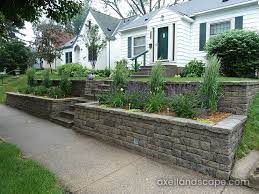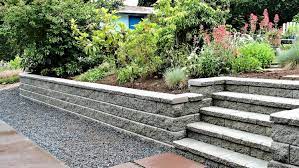Contents
Introduction:
Unlock the secrets of Retaining Wall Types with our comprehensive guide. Explore seven varieties and the science behind their design and construction. Retaining walls are architectural marvels that not only serve functional purposes but also add aesthetic value to landscapes. From preventing soil erosion to creating leveled terrains on slopes, retaining walls play a crucial role in various construction projects.
However, with a multitude of options available, choosing the right type of retaining wall can be overwhelming. In this blog post, we’ll delve into the science behind seven different types of retaining walls to help you make an informed decision.
Retaining Wall Types: Gravity Retaining Walls:
Know the retaining wall types, Gravity retaining walls rely on their weight to resist the lateral pressure of the soil. These walls are typically made from concrete or stone and are suitable for retaining moderate heights of soil. The key to their effectiveness lies in their mass, which counteracts the force exerted by the soil behind them.

Cantilever Retaining Walls:
Cantilever retaining walls are engineered structures that utilize a combination of vertical and horizontal supports to withstand soil pressure. These walls feature a horizontal footing and a vertical wall connected by a slab called a heel at the base and a thinner slab called a toe at the top. This design efficiently redistributes the soil pressure, making cantilever walls suitable for retaining taller slopes compared to gravity walls.
Sheet Pile Retaining Walls:
Sheet pile retaining walls are commonly used in areas with soft soil or limited space. They consist of vertically driven sheets, usually made of steel, vinyl, or wood, that interlock to form a continuous barrier. The sheets are driven deep into the ground to provide stability and prevent soil movement. Sheet pile walls are particularly effective in waterfront applications and temporary retaining needs.
Anchored Retaining Walls:
Anchored retaining walls employ the use of anchors or tiebacks to provide additional support against soil pressure. These anchors extend from the wall into the soil behind it, transferring the load to deeper, more stable layers. Anchored walls are versatile and can be constructed using various materials, including concrete, steel, or timber. They are often used in situations where space limitations or soil conditions make other types of walls impractical.
Gabion Retaining Walls:
Gabion retaining walls are constructed by filling wire mesh baskets with rocks or other durable materials. These baskets are stacked to form a wall that provides both structural support and drainage. Gabion walls are flexible, allowing them to conform to minor ground movement without compromising their integrity. They are cost-effective and environmentally friendly, making them a popular choice for landscaping projects and erosion control.
Counterfort Retaining Walls:
Counterfort retaining walls are similar to cantilever walls but feature additional vertical supports called counterforts spaced at regular intervals along the wall. These counterforts help distribute the load more evenly, reducing the thickness of the wall and allowing for greater heights. Counterfort walls are commonly used in highway construction and large-scale earthworks where efficiency and stability are paramount.
Hybrid Retaining Walls:
Hybrid retaining walls combine elements of two or more types of retaining walls to optimize performance and cost-effectiveness. For example, a hybrid wall may incorporate the stability of a gravity wall with the anchoring system of an anchored wall. By leveraging the strengths of different wall types, hybrid walls can address complex engineering challenges and provide innovative solutions for retaining difficult terrain.
Conclusion:
Retaining wall types come in various shapes, sizes, and materials, each serving a specific purpose based on the site conditions and project requirements. Understanding the science behind different types of retaining walls is essential for selecting the most suitable option for your needs. Whether you’re dealing with a steep slope, soft soil, or limited space, there’s a retaining wall solution that can help you achieve your goals effectively and efficiently.



